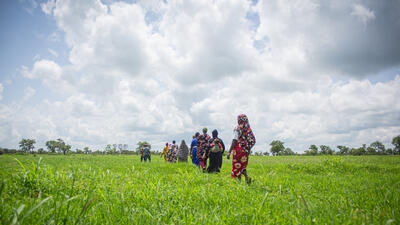
Tracking trade for small island developing States
The new International Trade Centre’s online ‘Trade Tracker’ for small island developing States is free, easy-to-use and helps policymakers explore trade-related topics of relevance to these countries.
Small island developing States (SIDS) face distinct challenges that affect their development and global trade participation. Geographically, these islands are often remote, leading to high transportation and infrastructure costs that hinder efficient trade. Moreover, SIDS are vulnerable to natural disasters like hurricanes and rising sea levels, which can devastate local economies and disrupt trade routes.
Economically, they typically have small domestic markets and rely heavily on a narrow range of exports, exposing them to global market fluctuations. This vulnerability became evident during the COVID-19 pandemic in 2020 when all major tourism destinations closed their borders for at least several months, leading to a decline of almost 70% in SIDS' travel exports.
Analysing trade data for SIDS is complex due to issues such as non-reporting, reporting delays, and inaccuracies. Collating and interpreting existing data to reveal trade trends can be challenging for many stakeholders. To address this, the International Trade Centre (ITC) has developed a new Trade Tracker for SIDS, using its unique data and expertise to create user-friendly trade indicators accessible to a broad audience. These interactive indicators cover diverse trade topics such as recent trends, specialization patterns, export concentration, and unique SIDS-relevant aspects like remoteness, tourism dependence, and food import reliance.
Three main findings underscore the islands’ trade-related vulnerabilities and emphasize the need to closely monitor their performances to design targeted support measures:
- SIDS export significantly fewer products (1,315) compared to the global average (2,750+), highlighting economic fragility due to the reliance on a limited export range.
- Travel represents over 25% of SIDS'* total exports—eight times higher than in other developing countries—, which exposes them to external shocks like natural disasters and pandemics.
(*Singapore not included in the SIDS aggregate) - SIDS import 72% of key food products, a notably higher share than other developing nations (54%), rendering them susceptible to global food price fluctuations.
To illustrate the risks posed by these dependencies, consider Comoros, one of the least developed SIDS, which exports fewer than 150 products. Although the country’s export basket has become more diversified with the share of commodities in exports decreasing from 68% in 2011 to close to 50% in recent years, 75% of Comoros' exports still concentrate around two sectors: horticulture and chemicals.
Ylang-ylang alone makes up almost one-fifth of the exports, with 72% destined for a single market, France. It is therefore not surprising that decreased demand for essential oils during the COVID-19 pandemic hit Comoros particularly hard, and exports have yet to fully recover.
The Trade Tracker is a tool that can provide critical insights into the unique trade challenges SIDS are facing. Its data can lead to informed decision-making and targeted policy interventions which then can bolster the resilience and sustainable development of SIDS in the global marketplace.
For more insights, explore our interactive indicators at: trade-tracker.org/SIDS as of 20 May 2024.



















